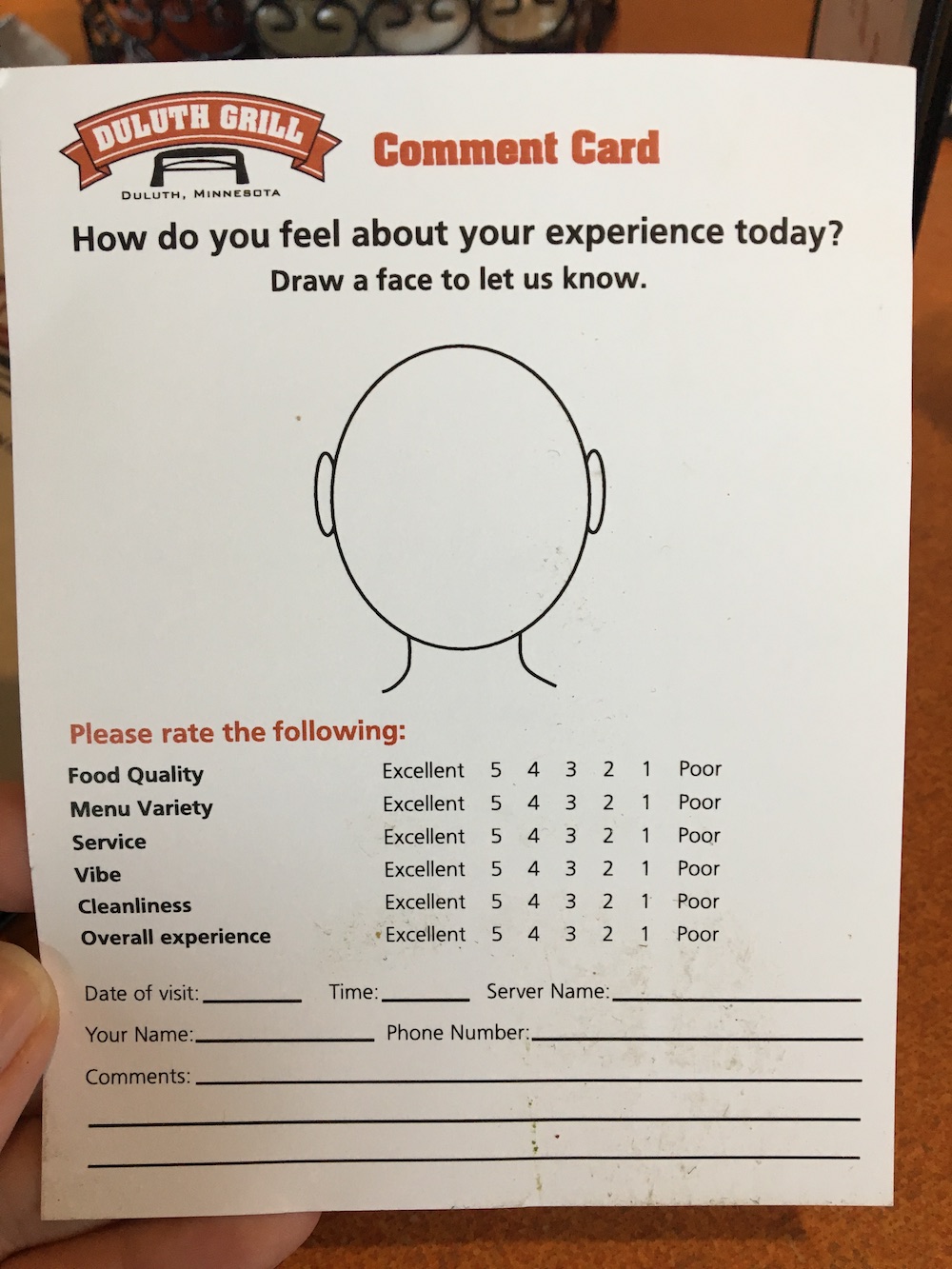Lately, it feels like I’m being bombarded with survey requests. Or maybe I just have surveys on the brain (this month we’ve published articles on survey fatigue, crafting survey intros and the U.S. Census, just to name a few).
Either way, the other night I started making a list of recent requests:
- Dairy Queen’s customer satisfaction survey;
- Amazon purchase survey (I ordered filters for my vacuum);
- comment card at a restaurant in Duluth, Minn.;
- Domino’s Pizza delivery satisfaction survey;
- TripAdvisor survey after riding the North Shore Scenic Railroad;
- Supergoop e-mail survey (a skincare brand I purchased from once over a year ago);
- guest survey from Marriott International (after a one-night stay); and
- a satisfaction survey after a visit to my dogs’ vet.
My list doesn’t include the many other surveys found at the bottom of receipts or in e-mails I never opened.
Can you guess how many I’ve completed? None. That’s right, even though I’m more aware than the average consumer of how important customer feedback can be, I haven’t taken the time to respond. But why? Am I really being bombarded by consumer surveys? Could this be due to my status as a Millennial – the “What’s in it for me?” generation?
In an article published in Quirk’s July e-newsletter, “Response rates: Part I: Looking at cost-benefit decisions” the author David Ensing discusses how consumers make cost-benefit decisions when asked to take a survey. Here’s a brief excerpt from the post:
“At first glance, one might think that there is no cost to the customer to respond. However, costs have been increasing over the past few decades:
- Time: People are now more pressed for time and they are more often solicited for research.
- Effort: Many surveys are long and complicated.
- Hassle and boredom: Some customers feel duped by agreeing to take what they think is a short survey and then finding out it is quite long – and many surveys contain boring and repetitive questions.
- Potential loss of privacy: Many customers worry that their information will not be kept confidential.
- Potential of being put on numerous mail/e-mail/phone lists: Many customers are concerned that their contact information will be sold to other companies and used for marketing purposes.
- Possible sales pitch: With the increase in selling under the guise of research, customers are more skeptical about the legitimacy of survey invitations.
… To increase response rates, researchers should look at both sides of the customer cost/benefit equation by seeking to decrease the cost to the customer and increase the benefits of participation.”
After re-reading Ensing’s article I considered this cost-benefit decision process in terms of my last Dairy Queen visit. Dairy Queen's chocolate extreme blizzard is one of my weaknesses, which I choose to indulge in every few weeks on my lunch break. The employee at the drive-through window always points out the survey at the bottom of the receipt. If I complete it I get a free dilly bar. Great incentive, right? Not really. The only item I ever order is a chocolate extreme blizzard and I’m not a big fan of dilly bars. The benefit (dilly bar) doesn’t outweigh the cost (time it would take to go online and complete the survey).
Maybe in the long run this approach works for a large enough sample of DQ’s customers. It’s unrealistic to expect DQ to cater its incentive to each customer. But I can’t help but think I’d be more likely to take the survey if I was offered something less specific, like a dollar off my next order.
No longer unique
As Ensing said in his article, simply being asked for your opinion is no longer a unique experience. I’ve worked with some amazing researchers on articles for Quirk’s that provide best practices and tips for reaching today’s consumer and I do believe companies have made great strides when it comes to gathering consumer feedback. But with the number of surveys consumers are asked to take, it feels like companies need to meet very high expectations when it comes to consumers’ cost-benefit analysis.
